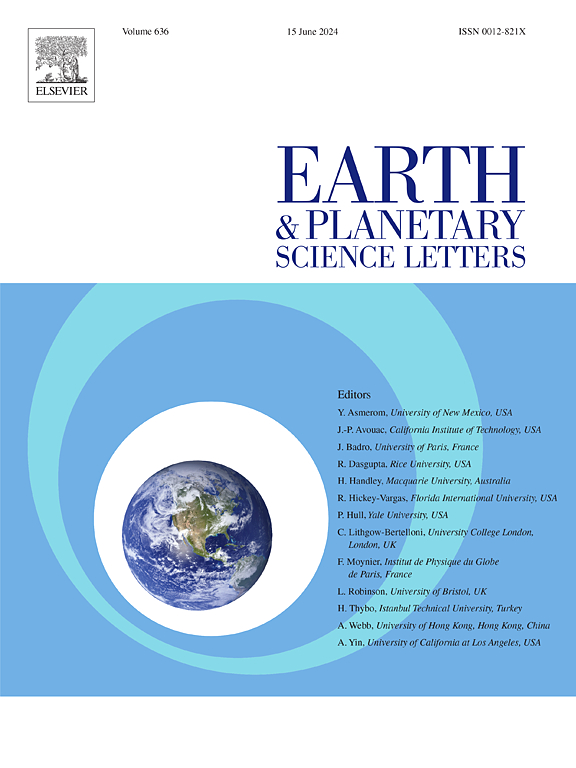Potassium isotope evidence for subducted upper and lower oceanic crust in ocean island basalt sources
Abstract
The Madeira mantle plume is proposed to contain a complete package of recycled oceanic lithosphere. It has not been possible, however, to establish if both lower oceanic crust and peridotitic lithospheric mantle are present within the Madeira magma source. This study reports potassium (K) and oxygen isotope data of lavas from the Madeira Archipelago, which show that δ41K (-0.50 ± 0.06‰ to -0.31 ± 0.01‰) correlates with Sr-Nd-Pb-Hf isotopic compositions, confirming the incorporation of recycled crustal material. The increase in δ41K from Madeira's early shield stage lavas (-0.50 ± 0.06‰ to -0.40 ± 0.05‰) to the subsequent post-erosional stage lavas (-0.34 ± 0.04‰ to -0.31 ± 0.01‰) is consistent with the mantle source becoming progressively depleted in recycled upper oceanic crust (converted to eclogite or pyroxenite) through melt extraction with decreasing age. The post-erosional lavas, however, require a source with higher δ41K values than in depleted peridotitic lithospheric mantle. Modeling demonstrates that during dehydration of high-temperature altered lower oceanic crust, the initial heavy K isotopic signature is preserved, consistent with the high δ41K values of the post-erosional lavas being derived from hydrothermally-altered lower oceanic crust in the Madeira plume source. Consequently, K isotopes provide direct evidence that ocean island magma sources can contain both upper and lower recycled oceanic crust. This study provides important constraints on the cause of the temporal changes in geochemical composition of ocean island basalts, the origin of mantle heterogeneity and the recycling of K through subduction zones and the deep mantle.

 求助内容:
求助内容: 应助结果提醒方式:
应助结果提醒方式:


